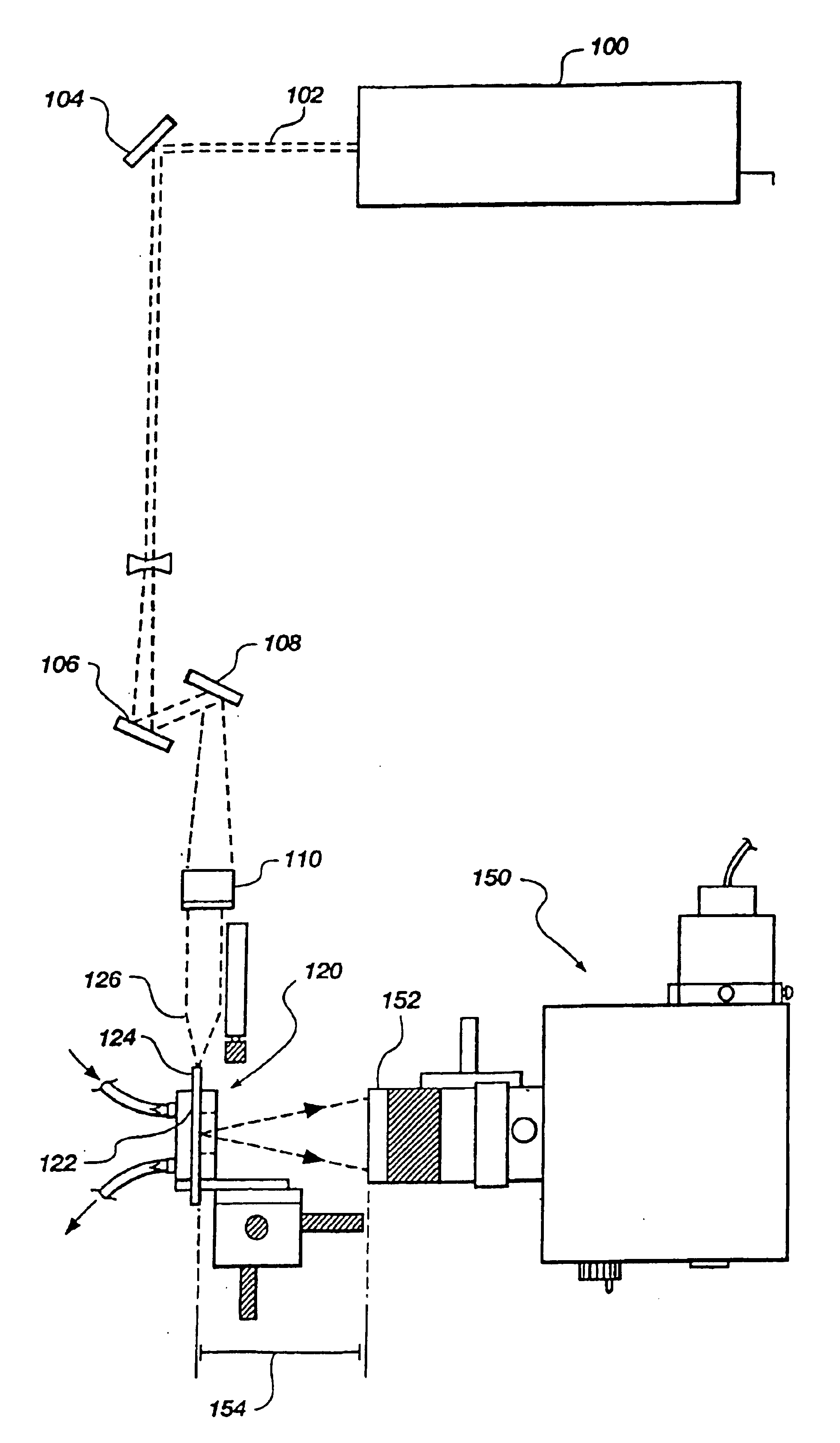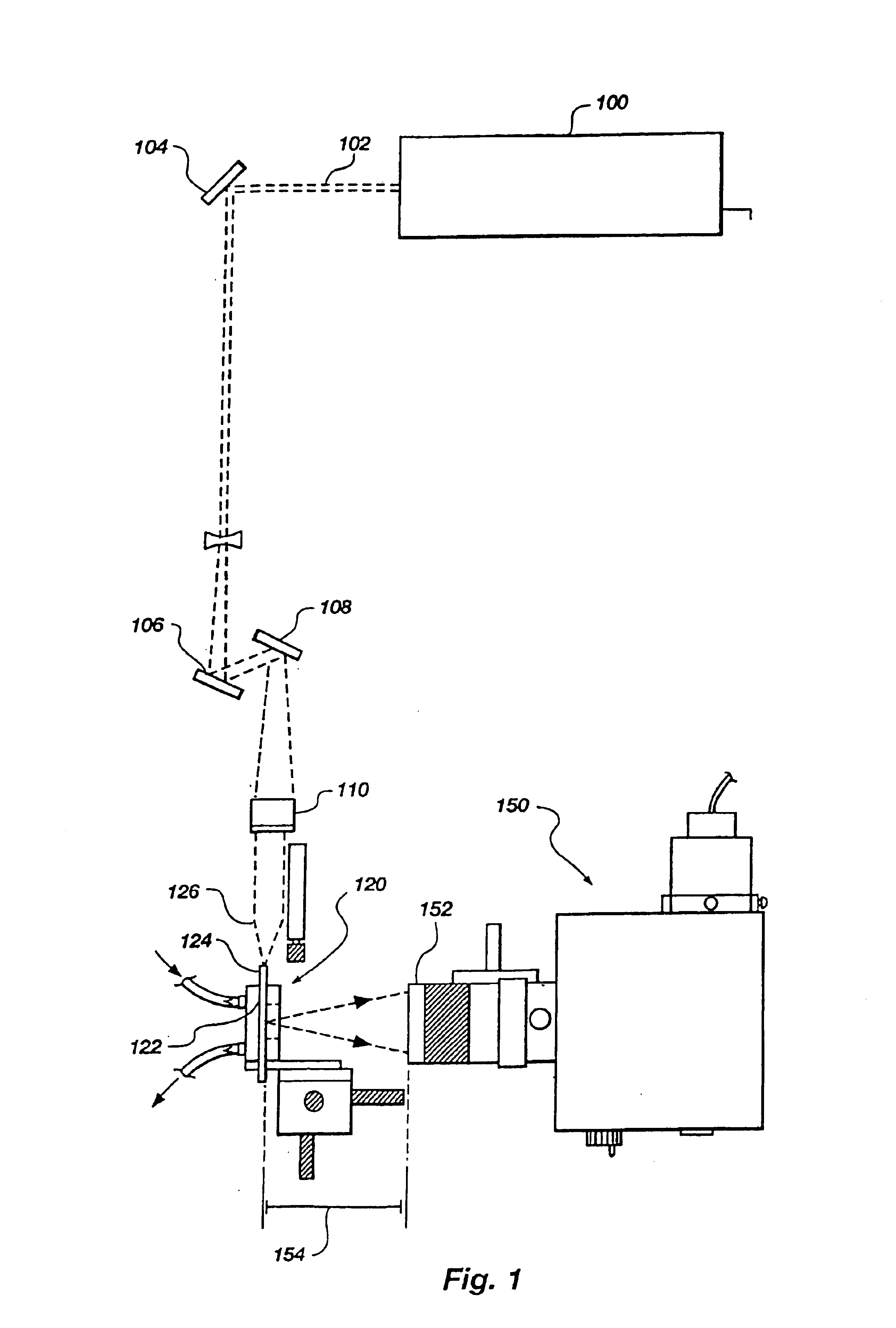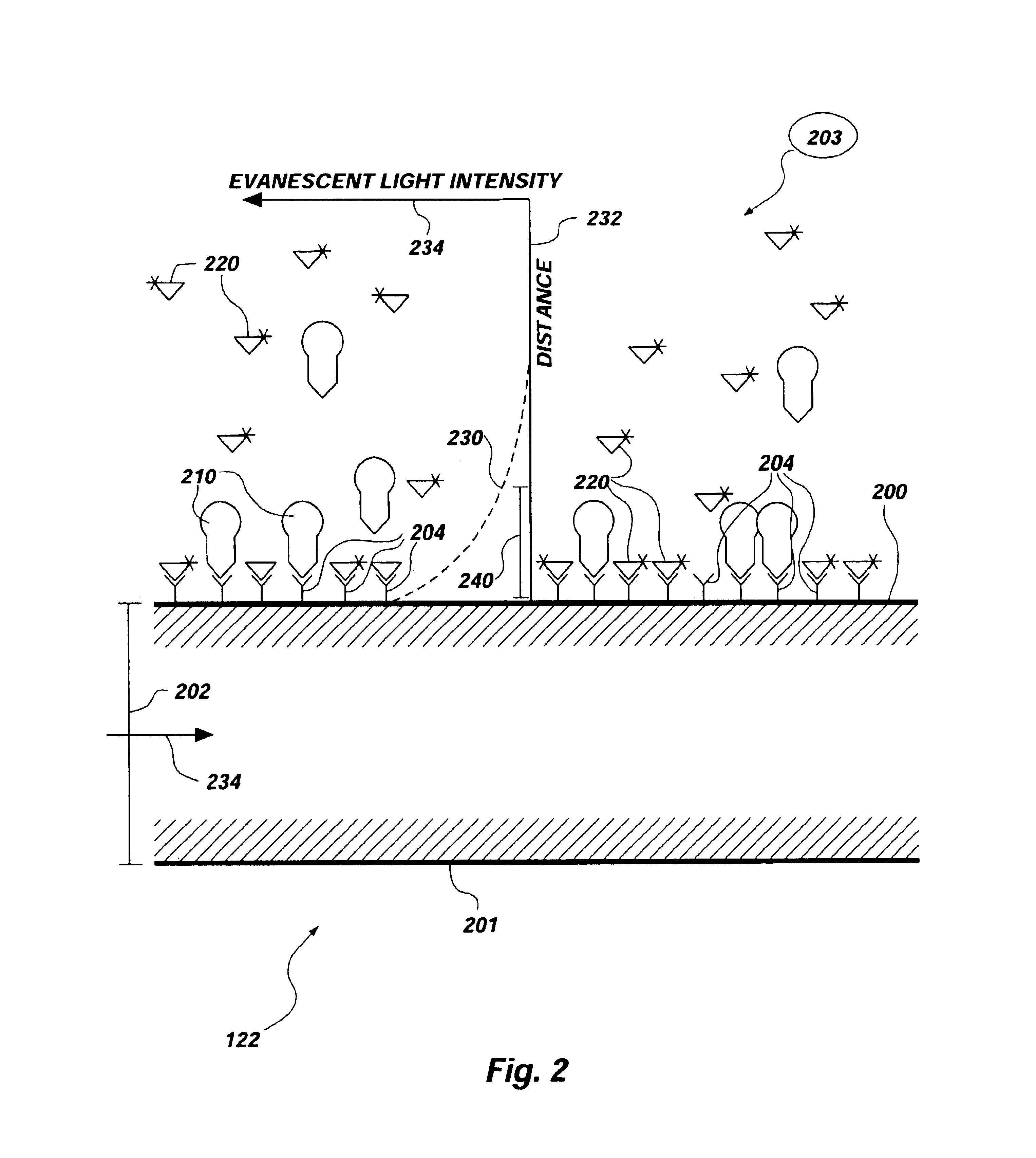Apparatus and methods for multi-analyte homogeneous fluoro-immunoassays
a fluoro-immunoassay and homogeneous technology, applied in the field of apparatus and methods for multianalyte homogeneous fluoro-immunoassays, can solve the problems of difficult to build a multi-well biosensor, tedious washing step, and part of the technician, so as to reduce non-specific binding and be easy to prepare
- Summary
- Abstract
- Description
- Claims
- Application Information
AI Technical Summary
Benefits of technology
Problems solved by technology
Method used
Image
Examples
example i
Preparation of Waveguide Surface—Hydrogel
[0094]A silica surface was prepared with a hydrogel coating comprised of polymethacryloyl hydrazide (abbreviated PMahy). Fused silica slides of CO grade and thickness about 1 mm, available from ESCO, Inc., were suitable as waveguides (optical substrates).
[0095]To graft the PMahy to the silica, the surface was derivatized with aldehyde groups. The derivatization was accomplished by silanization with 3-aminopropyltriethoxy silane (abbreviated APS) to add an amino functional group, followed by reaction with glutaraldehyde to produce free aldehyde groups. The PMahy was then reacted with these aldehyde groups to form the hydrogel coating.
[0096]Antibodies could be coupled to this hydrogel in at least two ways. In one method, the carbohydrate groups in the Fc antibody region are oxidized to aldehydes by treatment with sodium metaperiodate. However, few antigen-binding fragments contain carbohydrate moieties useful for this purpose. Thus, a preferred...
example ii
Preparation of Waveguide Surface—Avidin-Biotin
[0105]This strategy was designed to exploit the very strong binding affinity of biotin for avidin (binding constant of around 10−15). An avidin coating was readily made by physical adsorption on a silica surface. The Fab′ fragments were then conjugated with biotin to form biotin-Fab′ conjugates, also referred to as biotinylated Fab′ fragments orb-Fab′ fragments. The biotin is coupled at specific location(s) on the Fab′ fragments. The avidin coated surface is then treated with the b-Fab′ fragments, so that the biotin binds to the avidin, thereby immobilizing the Fab′ fragment to the surface in a site-specific manner.
[0106]In actual experiments, the procedure was as follows. Chromic acid-cleaned silica surfaces were immersed in a solution of 3×10−6 M (molar) avidin for about 3 hours at room temperature. The surfaces were then washed several times in PBS to remove unabsorbed avidin.
[0107]Biotinylated Fab′ conjugates were prepared from a sol...
example iii
Preparation of Waveguide Surface—Peg-Type
[0111]In this method, the terminal hydroxyl groups of polyethylene glycol (abbreviated PEG) were converted to primary amine or hydrazide groups by reaction with ethylenediamine (abbreviated ED) or hydrazine (abbreviated HZ), respectively, to produce PEG-ED2 or PEG-HZ2. The PEG molecules so modified were then coupled to APS-glutaraldehyde activated silica surfaces. One ED moiety on each PEG-ED2 molecule couples to a free aldehyde group on the silanized-glutaraldehyde-treated waveguide surface. The other ED (or HZ, if PEG-HZ2 is used) is then available to bind to an aldehyde moiety in a capture molecule (binding protein) such as an oxidized antibody or antibody fragment.
[0112]Monofunctional (PEG M2000, M5000) or difunctional (PEG 3400, PEG 8000, PEG 18,500) of the indicated molecular weights in Dalton were reacted with p-nitrophenyl chloroformate (abbreviated p-NPC; obtained from Aldrich Chemicals) in solution in benzene. The mixture was agitat...
PUM
| Property | Measurement | Unit |
|---|---|---|
| Molar density | aaaaa | aaaaa |
| Molar density | aaaaa | aaaaa |
| Molar density | aaaaa | aaaaa |
Abstract
Description
Claims
Application Information
 Login to View More
Login to View More - R&D
- Intellectual Property
- Life Sciences
- Materials
- Tech Scout
- Unparalleled Data Quality
- Higher Quality Content
- 60% Fewer Hallucinations
Browse by: Latest US Patents, China's latest patents, Technical Efficacy Thesaurus, Application Domain, Technology Topic, Popular Technical Reports.
© 2025 PatSnap. All rights reserved.Legal|Privacy policy|Modern Slavery Act Transparency Statement|Sitemap|About US| Contact US: help@patsnap.com



